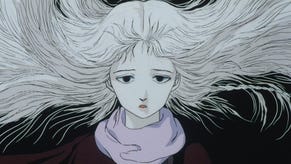Final Fantasy 10: fond memories of the classic RPG
Final Fantasy 10 is over ten years old and still one of our favourite modern RPGs. We run down the Square Enix classic's finest points in a celebration of the adventures of Tidus, Yuna, Lulu, Wakka, Kimahri, Auron and Rikku.
Popular consensus regarding the Final Fantasy series wavers with the ebb and flow of fashion. Final Fantasy 7 has gone from all-time classic to something to waggle your horn-rimmed glasses over while you talk up how good Final Fantasy 6 was. Final Fantasy 8 was going to be "four discs long with Resident Evil-style graphics", but its confused themes and unpopular magic system have rendered it something of a red-haired stepchild of the series despite its boldness. Final Fantasy 9 was a return to the old school stylings we all said we wanted, but has gone largely forgotten by everyone except me (it feels like).
The same tides have affected Final Fantasy 10's reception. The dizzying hype we experienced building up to its release held out for a while as we marvelled at the beauty Square Enix wrung from the then-new PlayStation 2, but crashed down bare months later. Suddenly it was all, "Hironobu Sakaguchi took a back seat on this project" and "dodging lightning is stupid" and "the sphere grid is broken" and "that scene with Tidus and Yuna laughing is f**king creepy".
Well, bollocks to all that. We are not at home to irony around here; we do not feel the need to distance ourselves form things we like out of insecurity that someone will judge us. We are grown ups. Final Fantasy 10 is fantastic.
Here are a couple of reasons why we have eternal love for the adventures of Tidus and co. Spoilers follow.
The aesthetic.
Square Enix's avowed intent with Final Fantasy 10 was to break away from the generic medieval European look of many fantasy worlds. Personally, I don't think Final Fantasy 6, 7 or 8 suffered from that at all, but 10 certainly made great strides in depicting a world with a more South-East Asian flavour in the mostly coastal inhabited regions of Spira. (Don't ask difficult questions about why hardly anybody lives in the great empty plains where the monster from the sea can't get to them. The explanation is as silly as it is unsatisfying).
The characters.
Final Fantasy 10's ensemble cast are varied and interesting and for once that makes some kind of sense. In the story, Yuna's crew of protectors were chosen for their skills and their relationship to her, rather than just being dragged along by events. For once, someone found a decent justification for throwing a chirrupy blonde into the mix beyond "she happened to be there at the time" - and all the character save the giant kitty cat have decent, complex motivations.
While your mileage may vary, Final Fantasy 10's party is certainly memorable. Wakka's stoic cheerfulness and respectful pursuit of Lulu are only part of the story; his little brother issues make him a perfect companion to Tidus. Lulu's unsuccessful first pilgrimage explains a lot of her reserve and need for control, and her warmth, when it shines through, is touching. Auron is - well, that's one of the great spoilers and certainly explains a heck of a lot.
Look, one of the characters has a dress made entirely of belts and fights with stuffed toys; if you want to argue about that you go right ahead.
The Sphere Grid
Yes, the Sphere Grid is a bit broken. If you put in the time (a lot of time) you can ruin the game utterly. But really, if you're going to spend the hundreds and hundreds of hours required to erase all the low-stat spheres and replace them with major ones, you probably deserve whatever you get.
In the meantime, the sphere grid grants a genuine sense of progression. Later Final Fantasy games (notably Final Fantasy 12 which is excellent even in its unfinished, cobbled-together, confused state, and I don't care to argue with you on this) refined on the theme, making it far more flexible and customisable, but this early-proto version was fantastic in that every few levels felt like you were actually achieving something. Much better than just watching a bar fill up.
It must be said though, Kimarhi's also-ran starting position, where he'll always be slightly less good at whatever path you choose than the character with a head start, is a crying shame - because who doesn't want an eight foot blue horned lion in their primary party.
The music.
Regular series composer Nobuo Uematsu isn't above sneaking memorable singles onto Final Fantasy soundtracks. Final Fantasy 10's Suteki Da Ne is a corker, and that cutscene still ranks. Apart from that, Final Fantasy 10 made some bold departures from franchise norms with its score - the opening cutscene with its heavy guitars was shocking at the time, and remains memorable.
Also, I know all the words to the Hymn of the Fayth and I will sing it to my children.
Blitzball.
This is a controversial one, because a lot of you hate Blitzball. It's certainly not easy to get into, but once you get the hang of it, start gaming the system, and begin recruiting in earnest it actually turns into a pretty cool little sports management sim - only everyone is underwater? Somehow? It's much more fun than Triple Triad et al, anyway.
Page two is packed with spoilers, so don't click through if you're yet to experience Final Fantasy 10.
The aeons.
Summons are one of Final Fantasy's recurring hallmarks, like Chocobos, Mogs, Cid and airships, but since they're intimately tied into the battle system they're probably kind of a headache for Square Enix's worldbuilding and design teams alike. As in Final Fantasy 6 and Final Fantasy 8, Final Fantasy 10 doesn't bury summoning as another kind of magic; the creatures you call on are real entities with backstories, and summoning itself is a central premise of the plot.
We've already talked about Final fantasy 10's unique aesthetic, but the aeon design deserves a special nod, bringing a fresh lick of paint to monsters we've grown familiar with. I'd really like to talk about Anima, though, the aeon Seymour summons. This dark, fishy beast feels like the shadow of Sin, but it has far more going on than an echo of the game's looming antagonist. Take a look at those arms crossed over its neck. Take a look at the chains. Listen to Yuna: "Let me share your pain."
Anima was created when Seymour's mother sacrificed herself to become a fayth, against Seymour's wishes, manipulating him into becoming a summoner - a path that ends badly for everyone, regardless of their other sins. What does the lingering consciousness of Seymour's unnamed mother feel when she looks on his works? What is her existence composed of? Pain, apparently. Christ in a barrell, Final Fantasy 10, I came here to relax not sit here leaking from the eyeballs.
Seymour.
Final Fantasy villains are pretty hit and miss, and after Final Fantasy 7's unforgettable Sephiroth I sometimes think Square Enix gave up altogether, insisting that every final boss be introduced about ten minutes before the end credits after you've spent the whole game fighting someone else. Final Fantasy 10 wasn't as egregious as Final Fantasy 9 (a giant crystal, Square? Really? Really?) but the entire last third is mainly you finding out by achingly slow degrees who you're supposed to be smacking around.
Happily, the first two thirds are filled with the delightfully slimy Seymour. We have a lot of reasons to dislike Seymour; top of the list is "tried to marry Yuna, my waifu" but those dastardly destroy-the-world plans are pretty troublesome, too. Mainly, though, I think we dislike-slash-totally-adore Seymour because he's just so subtly creepy. He's a handsome enough man, but he's not human, and his backstory makes it clear that despite his rise to power neither the humans of Spira nor the Guado find his existence acceptable.
Square Enix played up Seymour's hybrid creepiness, I think, and that's a little problematic, because the whole "being a child of two races has made me criminally insane" is a lazy and offensive trope, even when you substitute "species". But Square also gave him a heartbreaking backstory, and his ambition to destroy Spira is the best plan anybody seems to have come up with for ending Spira's eternal cycle of devastation before Tidus wandered along and accidentally fixed everything.
Yuna is the real hero.
Tidus isn't much of an antagonist, really. His genki persona is kind of refreshing after Cloud and Squall (and deeply regrettable in successor Vaan, who definitely should have taken a backseat to Baltheir, just saying) but his daddy issues are straight out of 90's anime's obsession with parenting and his attempts at wordly wisdom only remind you that he's a 17 year old star athlete prone to bouts of shallow depression.
Anyway. The best thing about Tidus is that he doesn't actually exist; he's a dream of the Fayth, long dead humans who (voluntarily or otherwise) entered a lingering half-death to give shape and form to new beings or constructs. As is made quite clear in the sadly under-appreciated sequel, Tidus isn't a memory; he was never even a real person. He's a pastiche of a long-dead hero and some random personality traits, probably chosen by the Fayth to appeal to and balance the serious, frightened but determined young summoner with the power to save the world - Yuna.
It's quite likely that if Tidus had not been constructed by the Fayth to accompany Yuna on her journey, she would have successfully made her pilgrimage and continued Spira's cycle for another millennium. But Seymour rose to threaten the world, and the Fayth responded, crafting a dream to nudge Yuna towards a path offering release and peace for everyone.
That path is Yuna's path. Bewildered as she sometimes is, seemingly tossed by circumstance, she never stops fighting or loses sight of her goals. We play as Tidus, but Yuna is the one who saves the world, and who makes a real emotional journey. Her pain at losing Tidus is much more important than his at leaving; of course he sacrifices himself willingly for the greater good. He was programmed to do so. He doesn't exist. Side note: giving Yuna a perfect non-existent boyfriend and then tkaing him away was a massive dick move, Fayth.
Final Fantasy 10/10-2 HD remaster is out now on PlayStation 3 and Vita. Share your own memories - or maybe new observations, if you're a first timer; we'd love to hear them.











